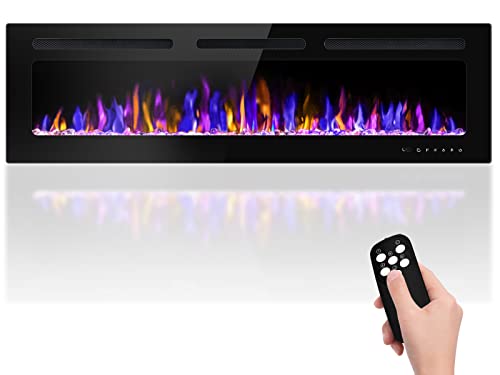The 15 Things Your Boss Wants You To Know About Fireplace You'd Known About Fireplace

What Are Fireplace Accessories?
Many homes have fireplaces that offer warmth and comfort all day long and into the night long. They also provide beauty and value to the property.
Whether your fireplace needs an overhaul or minor repairs, these tasks are often completed by homeowners. However, certain tasks that require gas service should be left to trained professionals.
The Hearth
The hearth is the non-combustible floor to the wood stove or fireplace. It can be a raised area or just the foundation of the fireplace. The term "hearth" is usually used to describe the entirety of the fireplace, which includes the firebox, raised mantel and floor as well as the chimney. It is crucial to remember that there are specific fire safety regulations concerning the construction of the fireplace as well as its accessories. You should consult your local authority for more information.
They can be made from stone, bricks or cement. They make a great focal point for any room. They are designed to protect against accidental fires that may be caused by stray embers or logs. wall mount electric fireplace offer space to store fireplace tools such as wood, tools and other equipment.
Archaeological research points to the importance of hearths as the central to early human life. It is widely believed that they provided food, protection, light and warmth.
A hearth could be a source of serious health issues if it's not maintained properly. Smoke inhalation increases blood levels of nitrogen, which prevents the red blood cells from delivering oxygen to tissues (methemoglobinemia). It can cause nausea, dizziness, and loss of consciousness at high concentrations.
Traditionally, hearths were constructed of rock but they are now made out of brick or concrete and come in different shapes and sizes. Some cooking fireplaces feature hearths that cover the entire wall while others are smaller and purely decorative elements that cover the fireplace's opening. The material used to construct the hearth can have a huge impact on its appearance and cost as well as the resistance to heat.
The Surround
A fireplace surround (also called mantel) is the frame that is placed above the hearth, and is a part of the ambiance of the room. Apart from its aesthetic value, it is also a functional element as it keeps combustible substances away from the fireplace and deflects heat from the room. It can also serve as an extra shelf for household items like mirrors or paintings.
Depending on the type of fireplace, there are a variety of materials that can be used for the surround. Some are non-combustible while others need to meet local and national fire codes regarding clearance distances from fire-prone objects.
Popular choices for the surround are brick, stone, or concrete. Some stone surrounds come with decorative features like bevels and bolection moulding. They can also feature plinths or cornices. These features can give your home a more refined design that matches its style.
Another option is plaster. It is an amalgamation of sand cement, and water. It can be shaped to match any style of architecture. A plaster surround, for example, can complement a Mission style house.
The most popular option for the fireplace surround is tile. This material is available in a myriad of colors and patterns. It can be used as an accent to the surround, or spread across the entire wall for an impressive focal feature. Tile is an excellent option for homes that have modern style.
The surround is the first thing guests notice when they enter a room. It is important to select an item that sets the tone for your space and also to add value to your home.
The Firebox
The firebox is the part behind the fireplace's opening, where the fire can be created and maintained. It's usually surrounded by a kind of chimney to allow the smoke to escape through. These traditional structures typically burn wood, but they can also burn gas such as propane or natural gas.
No matter what kind of fuel you are using, the firebox is the place where combustion occurs and needs to be properly maintained for safety and efficiency. The grate in the hearth along with a fire poker as well as an air damper are all vital elements of the firebox that must be in place for efficient operation.
In addition to keeping the firebox and liner in good shape, it's important to clean out your fireplace on a regular basis. Since it's always exposed to high temperatures, the inside will be covered in soot and ash that need to be cleared. To clean it, make use of a wire brush or a scraper to get rid of the caked-on ash and soot.
For longevity and durability It's a good idea to line the inside of your fireplace with steel slag. These metals are resistant to corrosion and will not rust. They also provide more even heat distribution and last for longer.
Additionally you can add a bit of visual flair to your fireplace by using decorative fire logs or lava rocks. Some homeowners also opt to make use of modern decorative glass as an alternative. Make sure that the fireplace you use is UL rated. This includes not only the fireplace itself but also the accessories and decorations you're adding to it.
The Burner
Burners are a popular way to add warmth and style to any room. These fireplace accessories are available in a variety of shapes and sizes which makes it easy to find the perfect burner for your home. Some come with remotes so you can control the flames from any place in the house. Fire burners can be used indoors as well as outdoors, as they are safe.
There are a variety of burners. Each one has its own advantages and drawbacks. Some are more expensive, but they all have a variety of benefits. Certain types of burners are safer than others ones, and some operate with or without chimneys. No matter what type of burner you select, make sure to adhere to the directions in the product's manual. This will ensure that the burner is properly installed and is in compliance to all local and state laws.
While burning wood is the traditional way to enjoy an open flame, it's not always the most practical. Besides the fact that it's a messy, inconvenient process, the smoke and soot that it releases could be harmful for you and your family. Ethanol burners release water vapor, and extremely low levels of CO2, which is more environmentally friendly.
Another benefit of having a fireplace is that it could be helpful in the event of an outage. In winter, a lot of snow and ice may accumulate on trees, which can cause them to fall and knock down power lines that hang below. You can use your fireplace to cook and keep warm in the event that the power goes out in your home. This is a great option for homeowners who are prepared for the unexpected.
The Flu
The flue is a tunnel within the chimney that carries smoke and gases out of the house. It's also a key element of a safe and effective fire. A flue creates a breeze that pulls air into the fire. This lets the fuel burn completely and reduces smoke.
The flue's draft prevents the hot gases produced by the fire from venting into your home. Instead they are taken out to cool. It is this regulated venting that helps prevent carbon monoxide poisoning.

Inspect your chimney on a regular basis for any leaks or blockages. The flue pipe (a steel tube or duct running through the middle of the chimney) should be cleaned using special cleaning chemicals and equipment. The metal brush, a drill equipped with brick bits and masking tape are all needed to remove any soot or tarnish that has been stuck on the walls of the chimney flue pipe.
The flue should be kept closed when you're not using your fireplace helps keep the air conditioned inside from getting out. This also stops rain or wind gusts getting into the fireplace and causing damage to the wood stove or gas furnace.
The damper, located near the bottom of the flue pipe, or flue tiles and on the top of the fireplace is able to be closed or opened via a latch or handle. It is designed to keep the flue open when the fire is burning however, it should be closed when not in use to help reduce your energy costs and keep animals and precipitation out of your fireplace.
